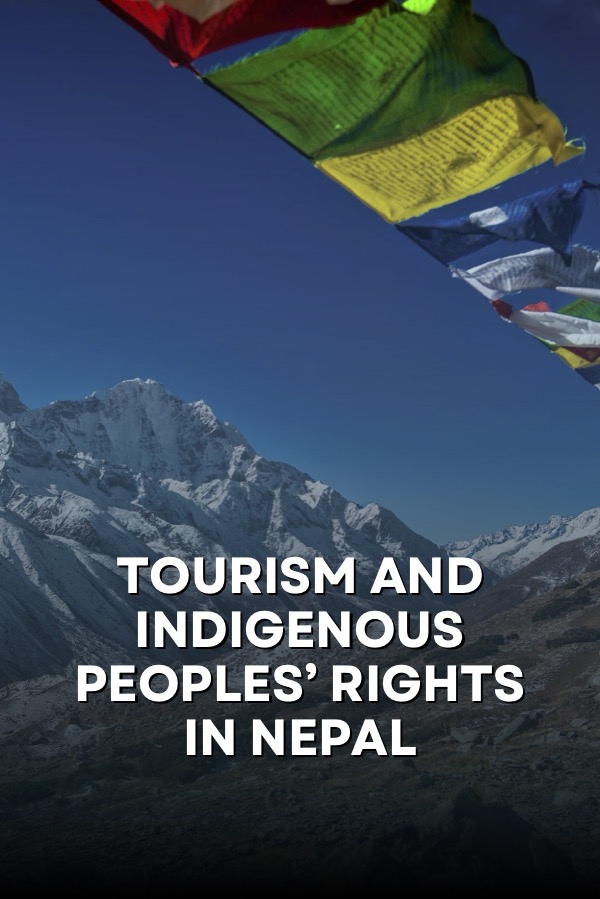Tourism industry plays and can further play a significant role for Nepal’s economy and prosperity, including in terms of environmental conservation. However, the industry has often entrenched marginalization of Indigenous Peoples in the country and resulted in violations of their rights, including in the context of establishment of protected areas, tourism establishments and businesses as well as representation of Indigenous image.

On many occasions, Indigenous Peoples have suffered loss of traditional lands and other violations of their rights in favor of tourism projects, which directly affects their lives and livelihoods. Particularly relevant is the establishment of protected areas, which have been mostly created by displacing Indigenous communities from their lands and resources. Concerningly, Indigenous communities have even been subjected to wide range of abuses, including killings, torture, arbitrary detentions, mistreatment, harassment as well as sexual violence against women at the hands of army, forest rangers and others in the context protected areas set up for environmental conservation and tourism.
Tourism establishments and business have also encroached upon lands and sacred sites of Indigenous communities in various parts of Nepal. Indigenous defenders and activists have faced retaliations and reprisals for raising their voices against violations of their rights and those of their communities in the context of such tourism undertakings, including at the hands of businesses.
Further, Indigenous Peoples’ cultures, traditions and arts are largely used as tourism attractions while their rights to the cultures and arts are not effectively recognized and protected. At the same time, representation of Indigenous Peoples and their cultures for tourism has not been in their own terms and often not reflective of the ongoing repression against them and their cultures by the State authorities and tourism businesses.
On the other hand, Indigenous communities in Nepal mostly do not get the proportionate benefits of tourism on their lands or that use their image compared to the adverse impacts they are subjected to while the State authorities and tourism businesses take home most of the revenue from the industry. Indigenous women and girls are further limited in reaping the benefits of tourism. They face more severe impacts due to loss of lands and resources and are subjected to specific violence such as rape and sexual abuse and trafficking.
Some Indigenous communities have themselves developed local-level or small-scale tourism enterprises that have directly benefitted the community members in line with their self-determined development. However, those enterprises lack State support.
In order to safeguard Indigenous Peoples’ rights in the context of tourism industry in Nepal, the Government, among other things, should immediately carry out comprehensive legal and policy reforms, in consultation with Indigenous Peoples, for implementation of the State’s obligations under ILO Convention 169 and the UN Declaration on the Rights of Indigenous Peoples. Specifically important is to guarantee the rights of Indigenous Peoples to their lands, territories and resources, including forests, as well as their Free, Prior and Informed Consent (FPIC) for making any decisions affecting them.
For details, click here to read the full case study.